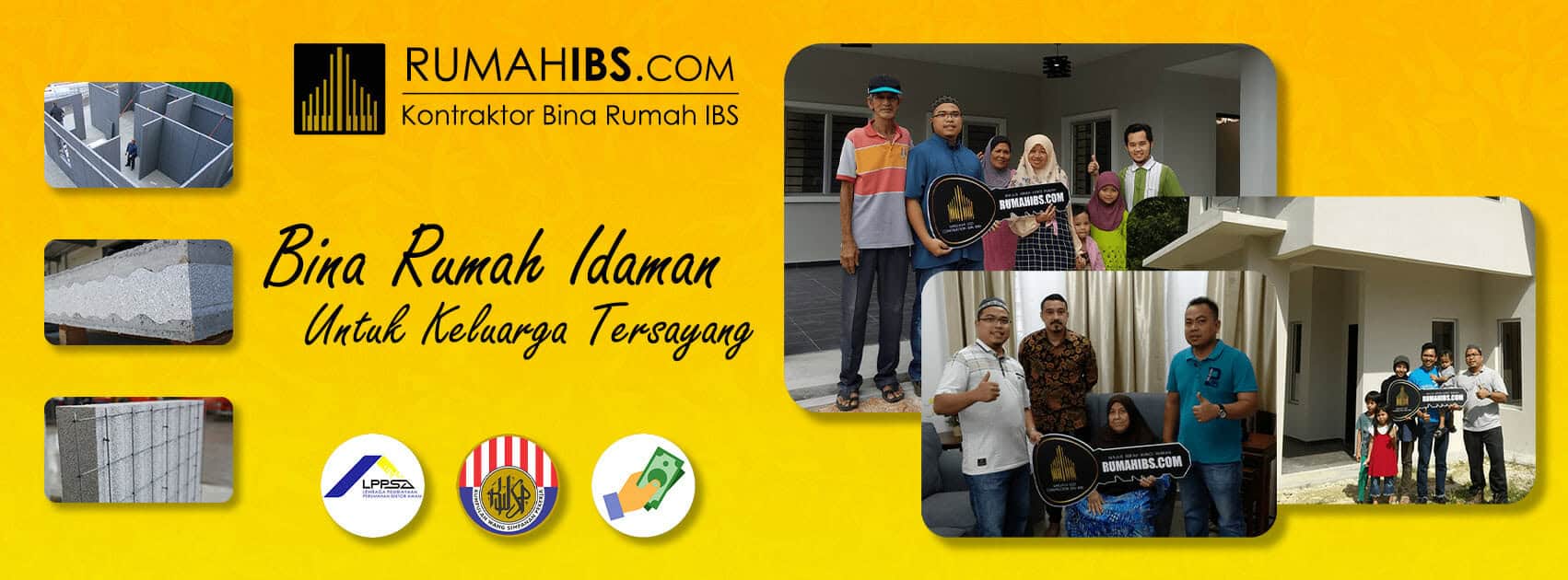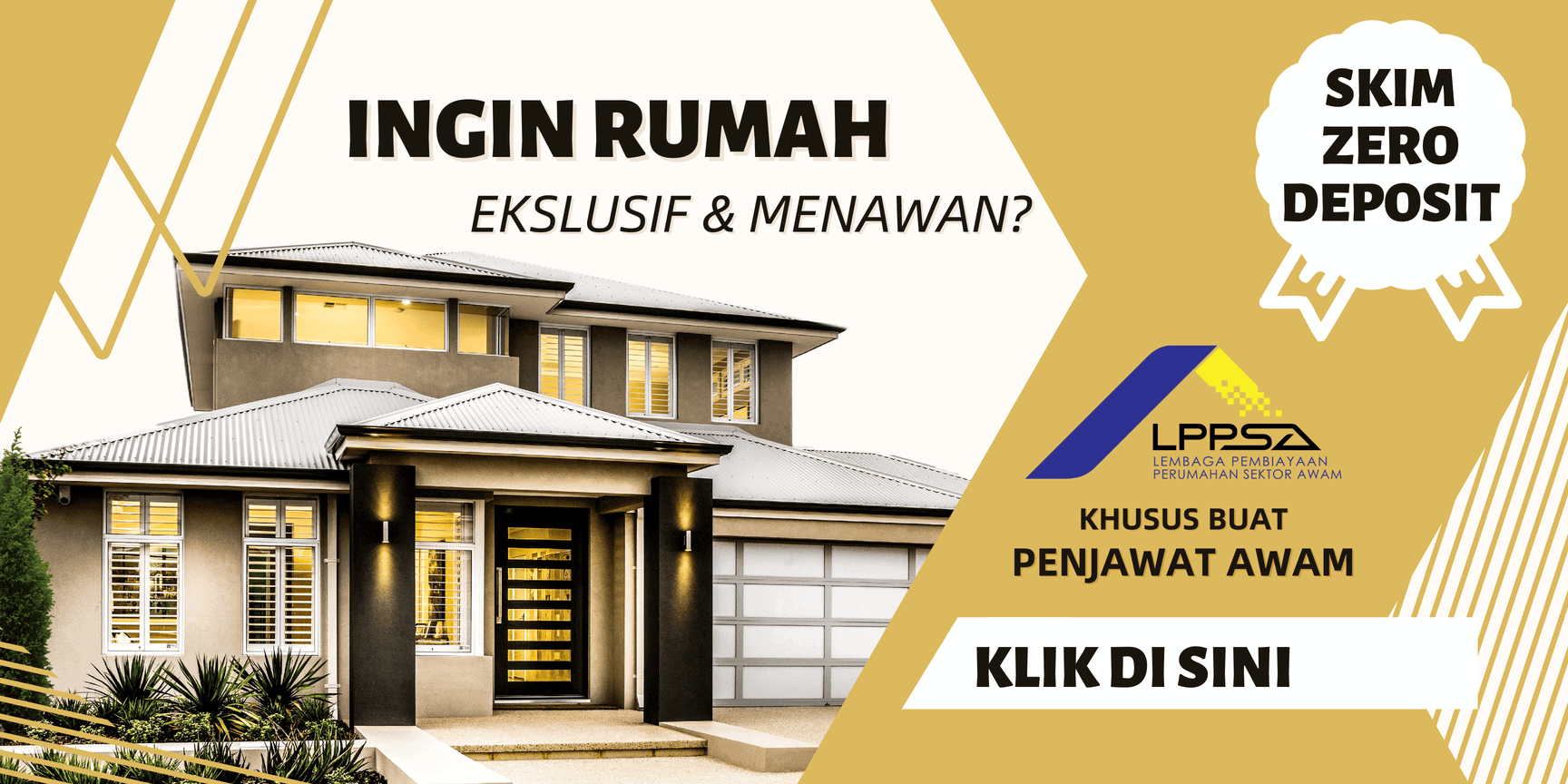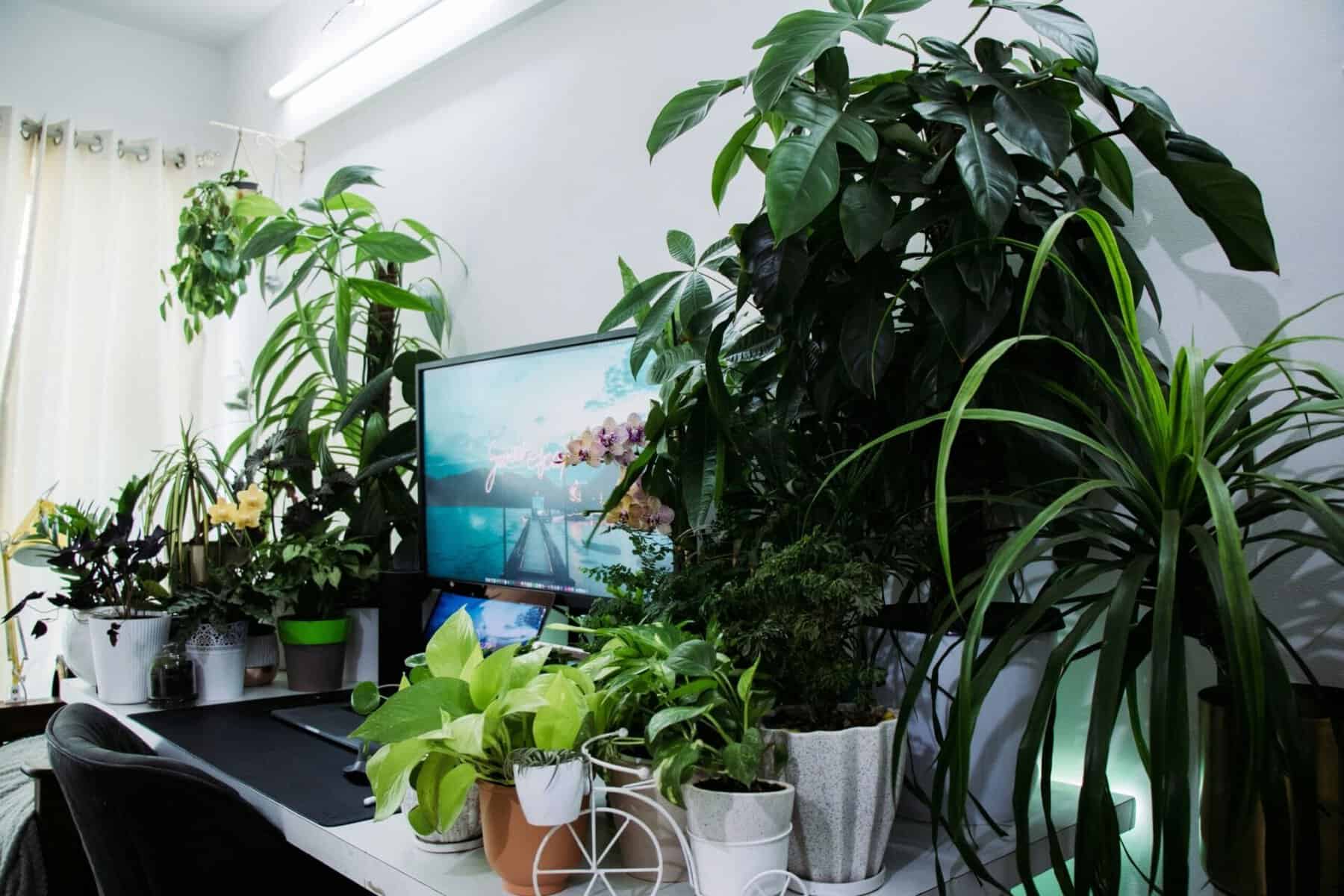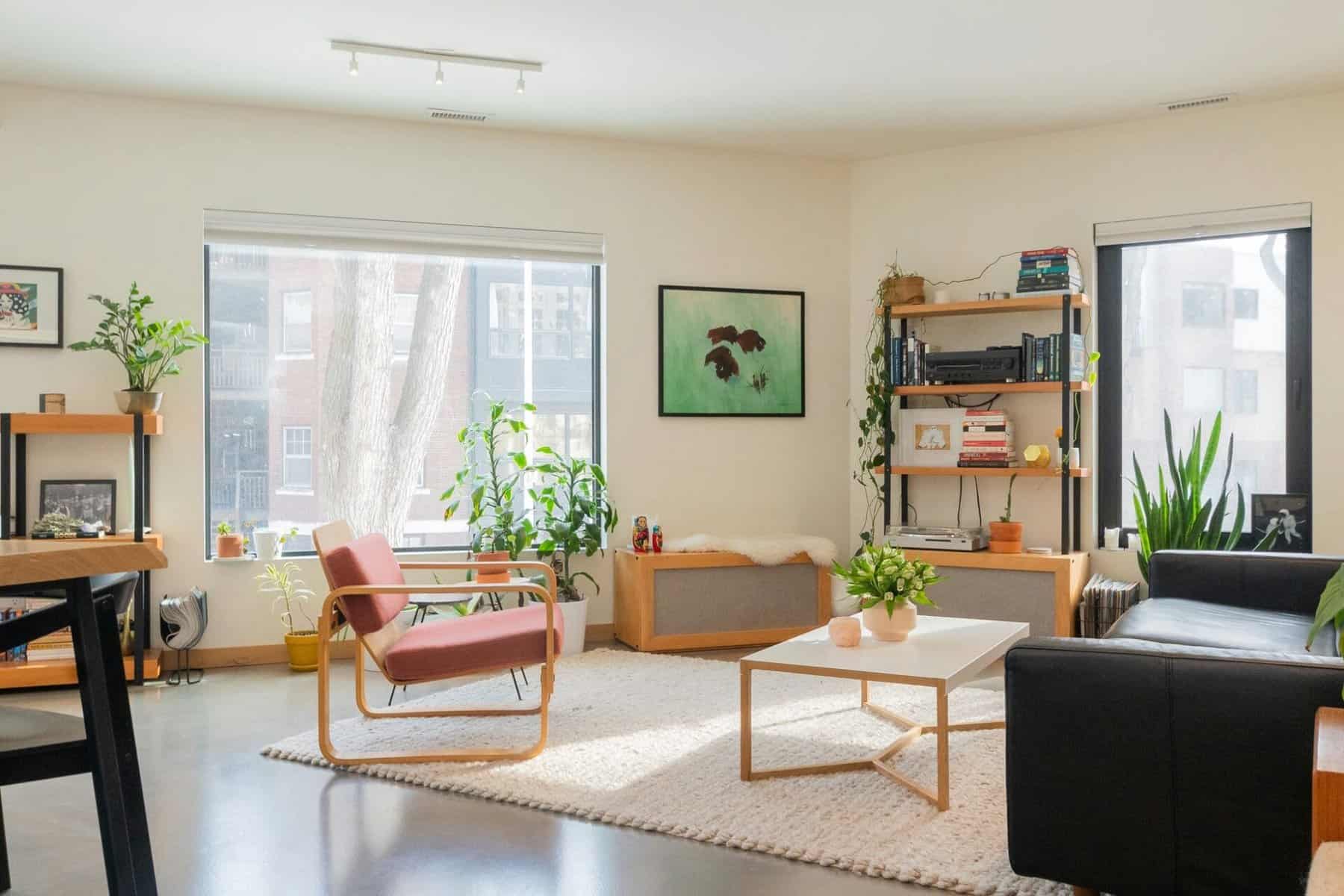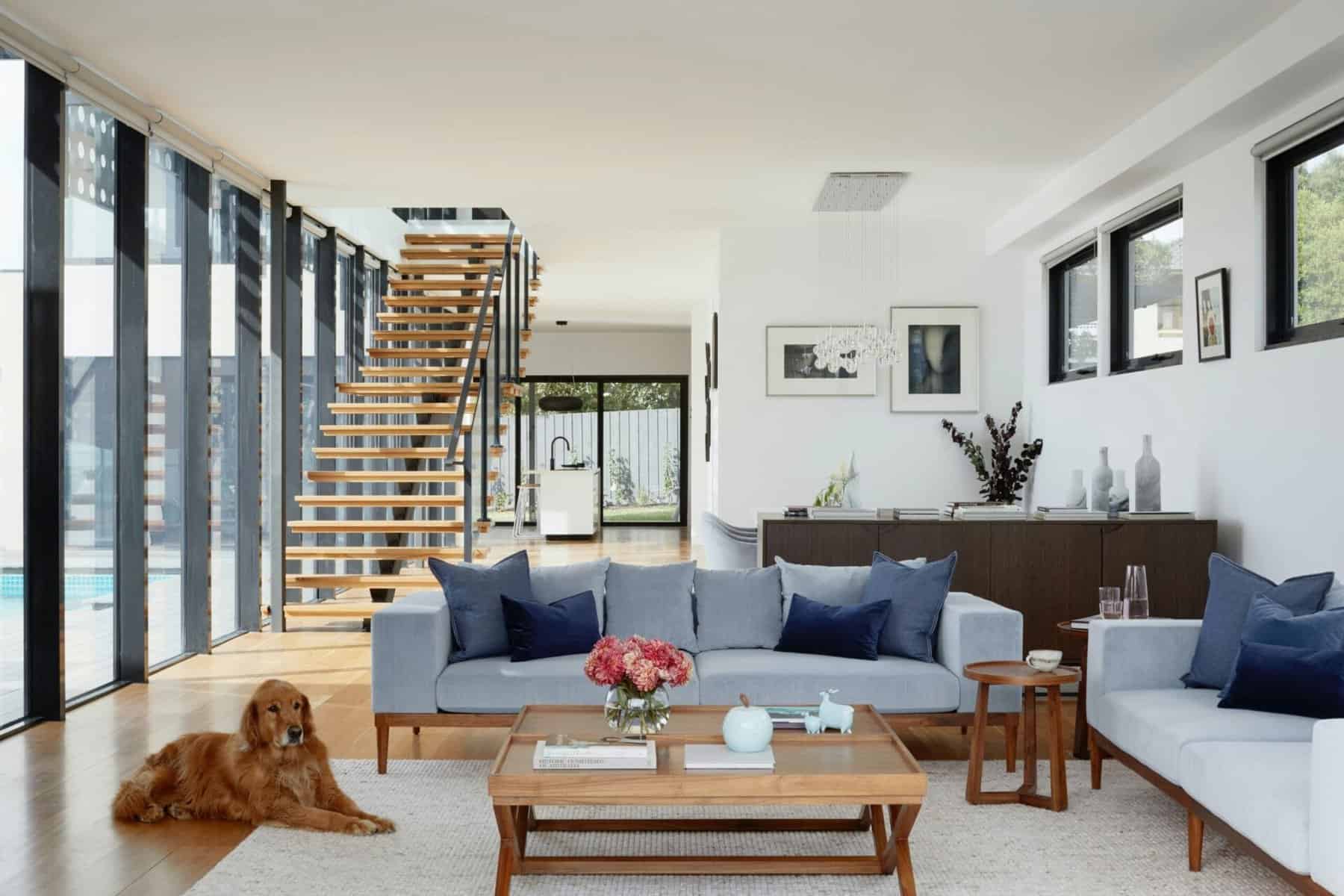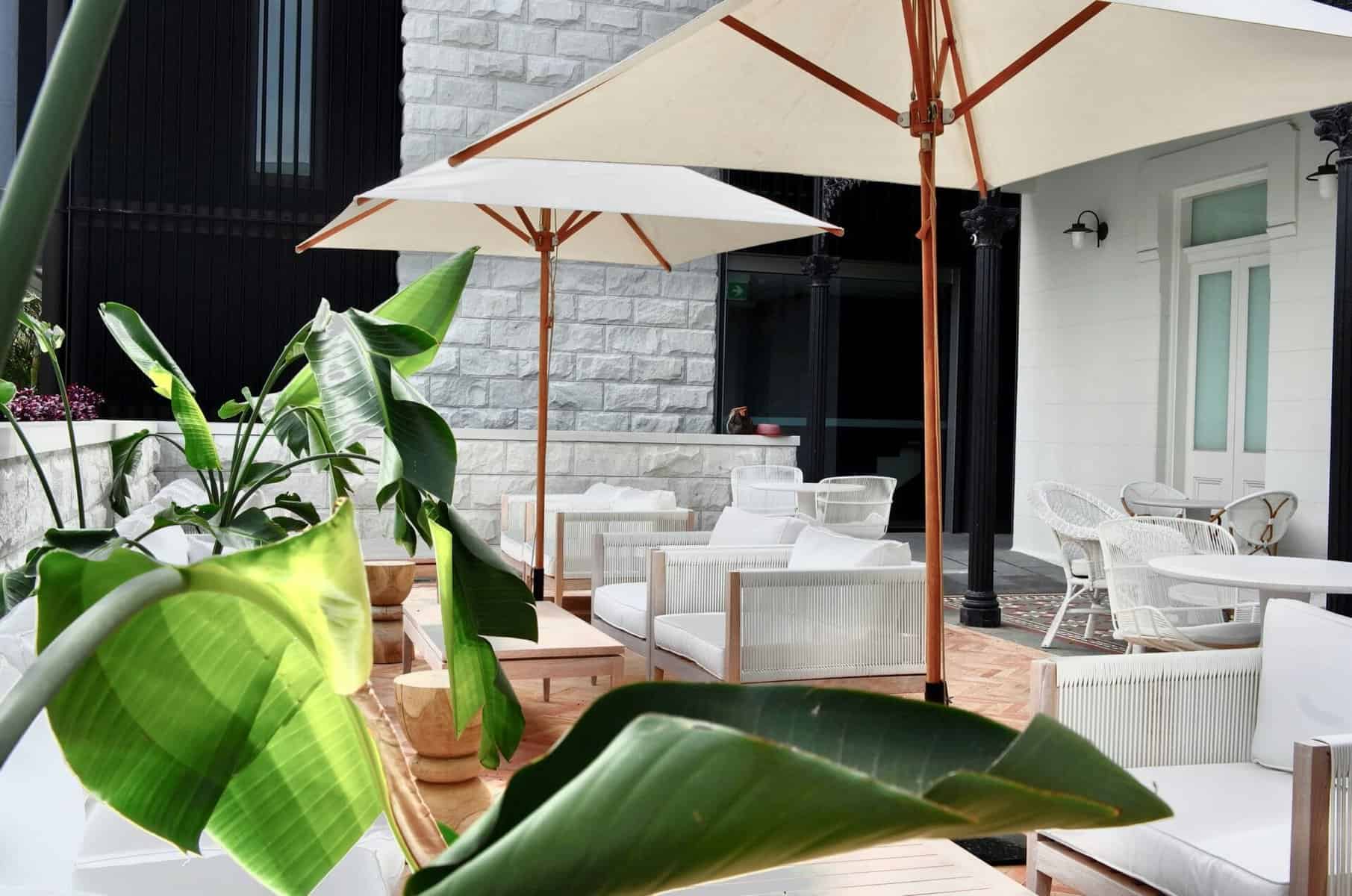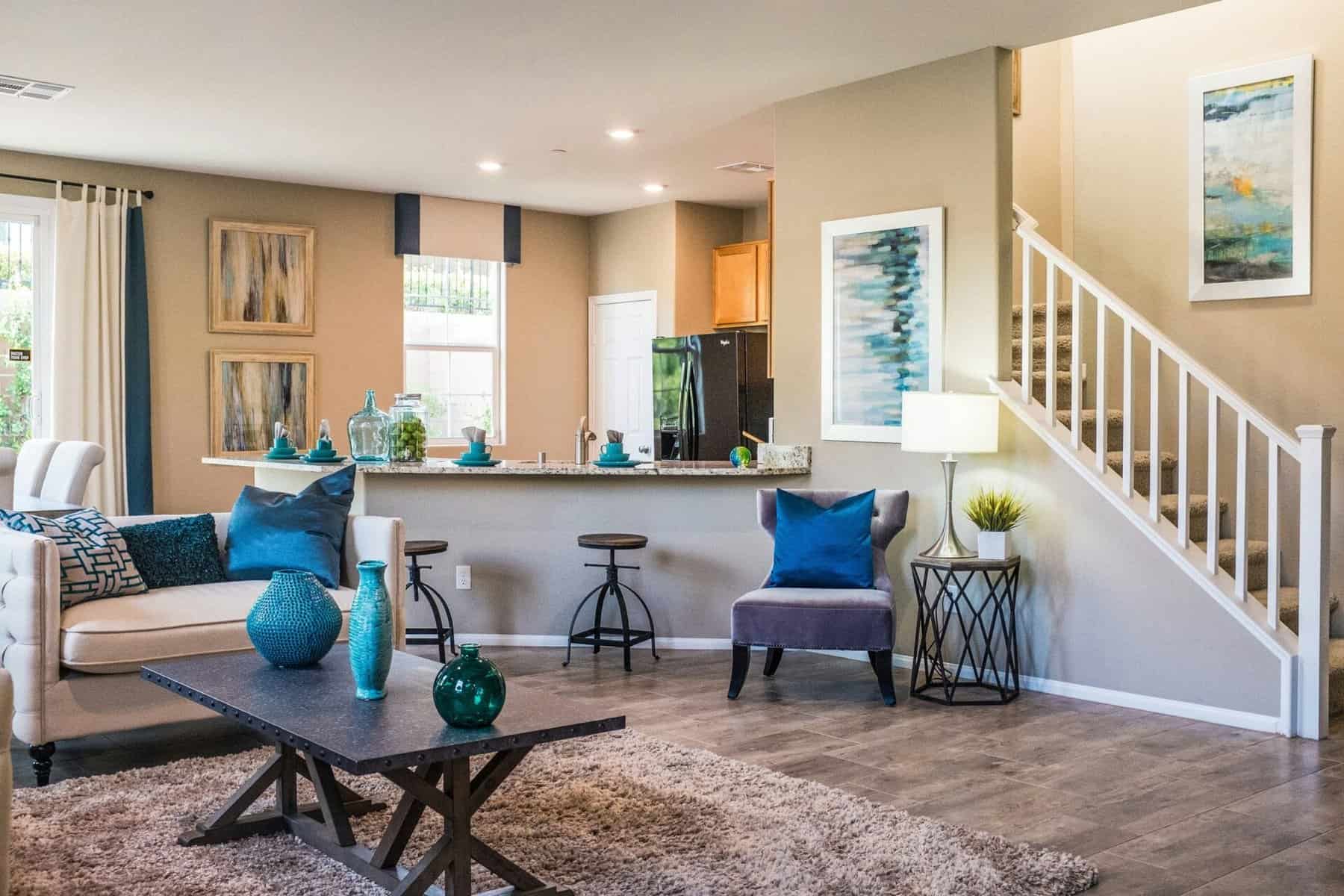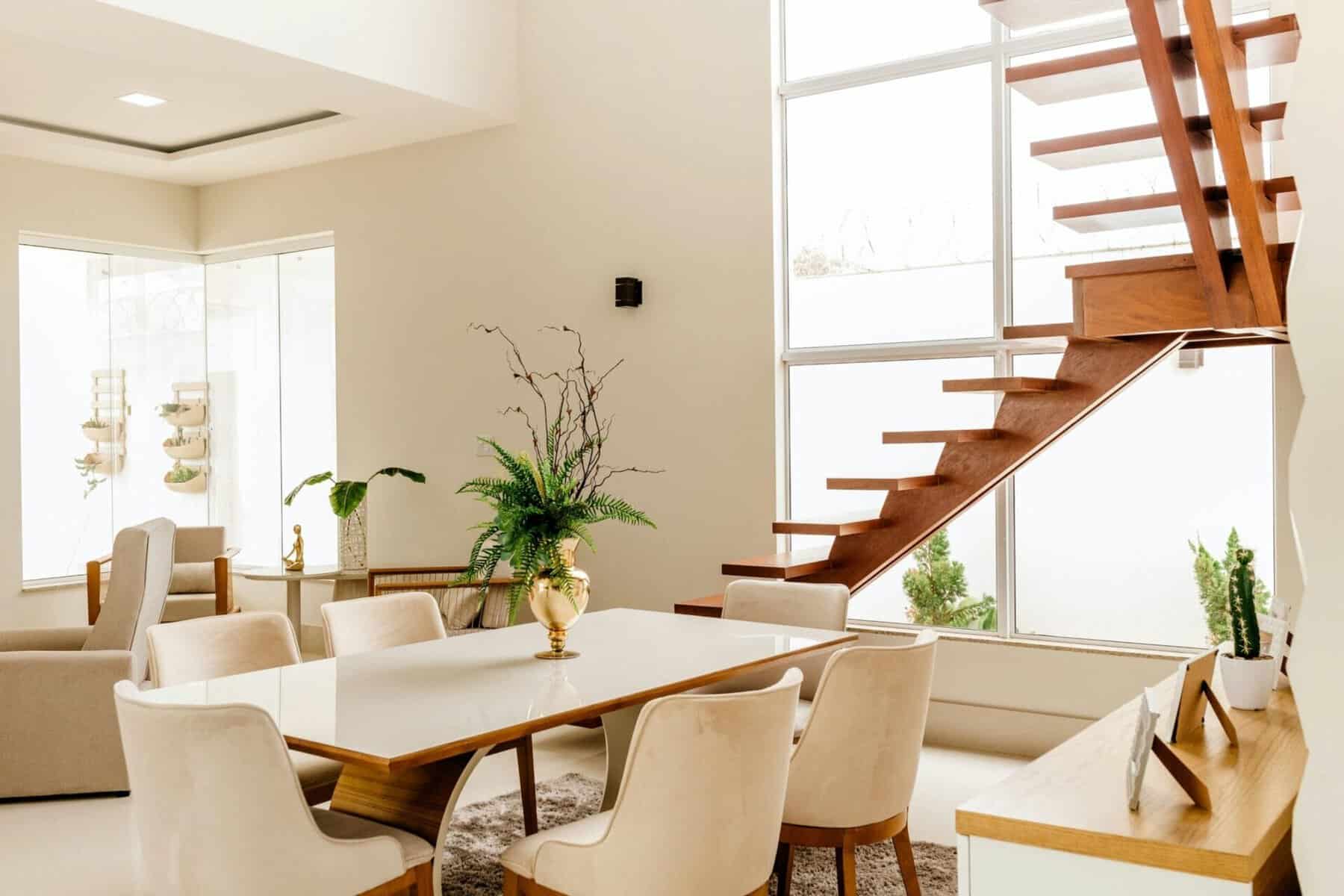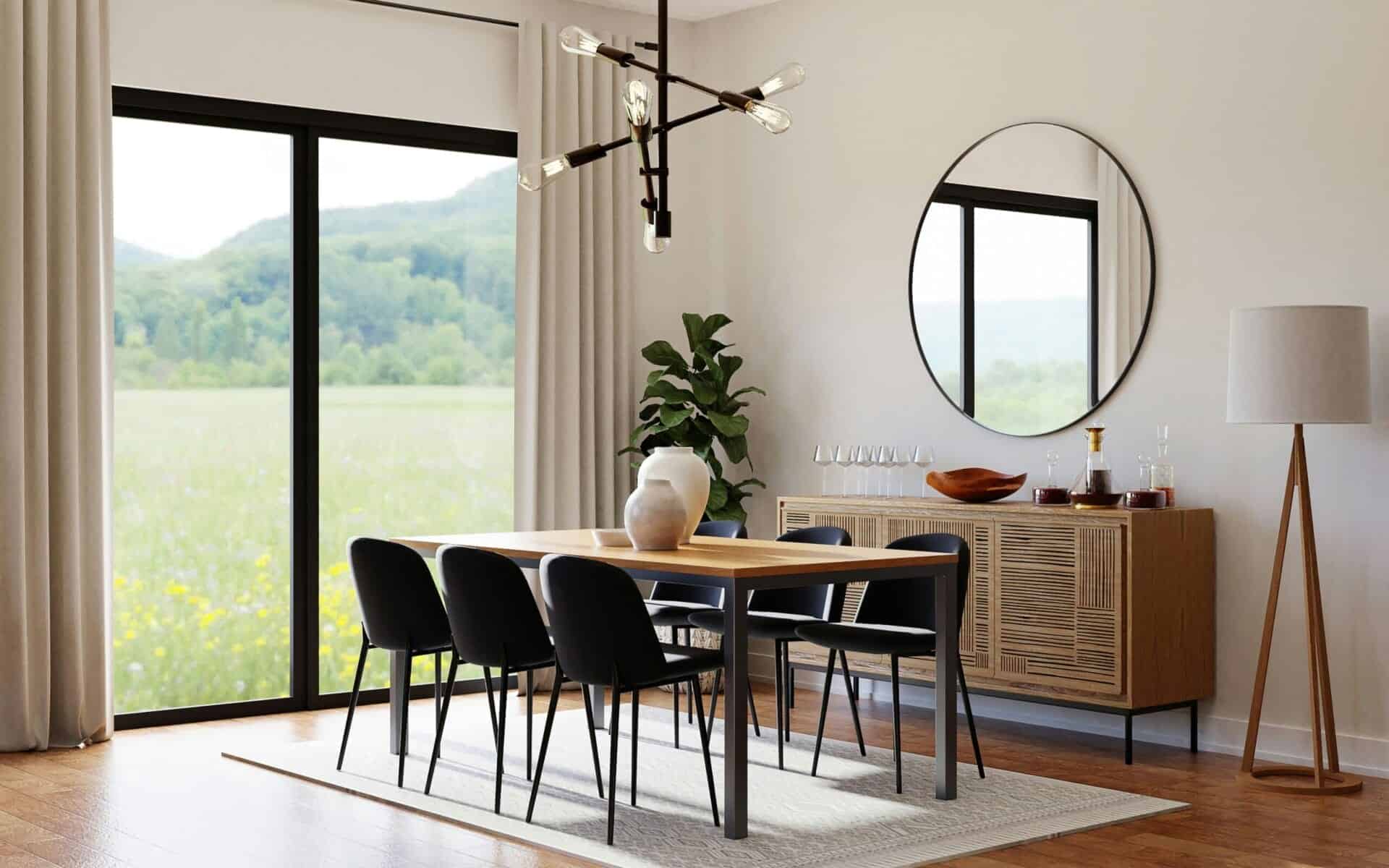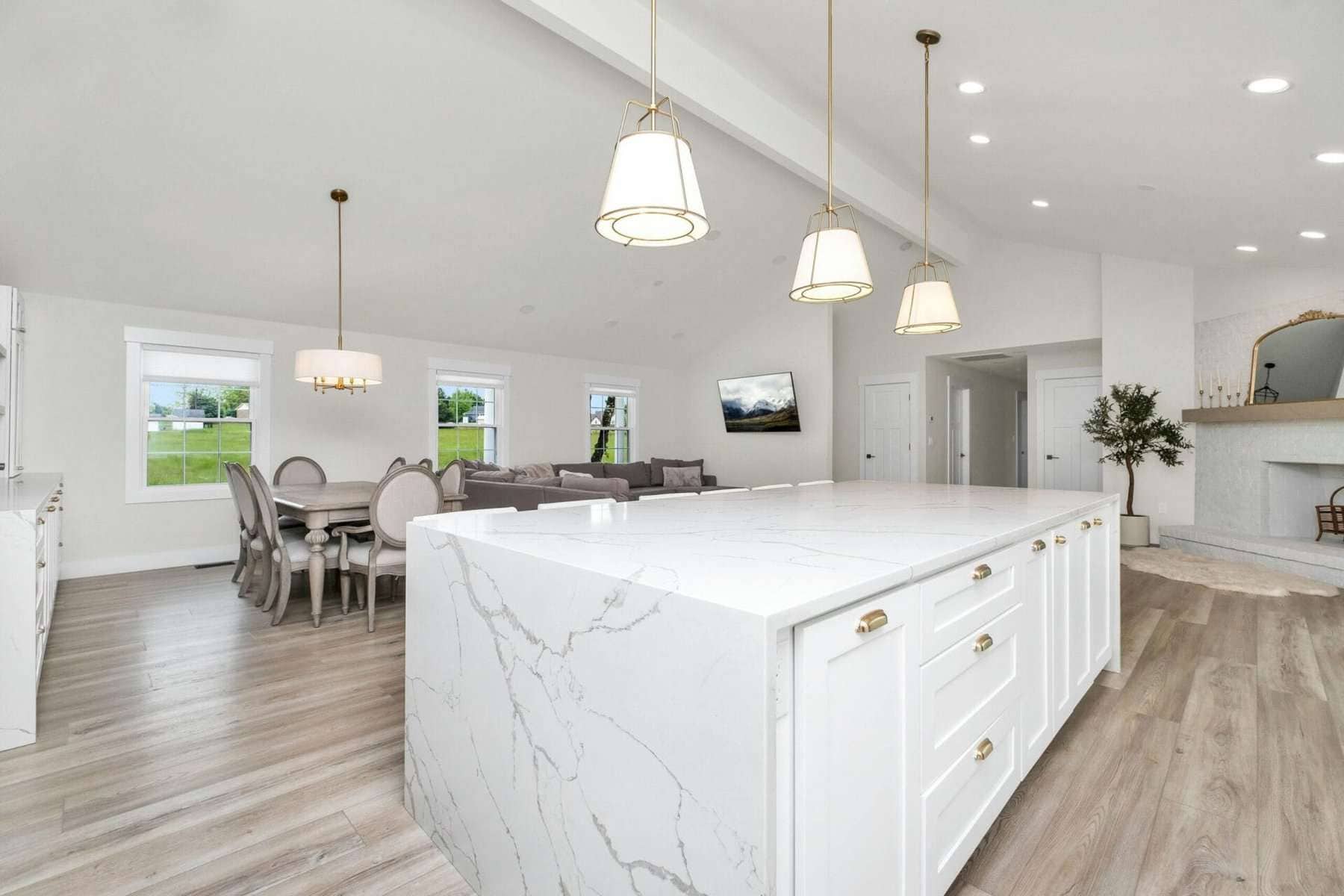- Bina Rumah Batu-Bata
- Zero Deposit
- Spesifikasi Rumah
- Lokasi Projek
- Pembiayaan LPPSA
- Garis Panduan LPPSA (Rasmi)
- Soalan Lazim LPPSA
- E-Book LPPSA (Download)
- 1. Apa itu LPPSA?
- 2. Kelebihan LPPSA
- 3. Syarat Kelayakan
- 4. Jenis-Jenis Pembiayaan
- Jenis 1 – Pembelian Rumah Kediaman Yang Telah Siap
- Jenis 2 – Membina Rumah Di Atas Tanah Sendiri
- Jenis 3 – Membeli Rumah Kediaman Yang Sedang Dibina
- Jenis 4 – Pembelian Tanah Bagi Pembinaan Rumah
- Jenis 5 – Melunaskan Keseluruhan/ Sebahagian Pinjaman Sedia Ada Daripada Bank/ Institusi Kewangan
- Jenis 6 – Pembinaan Rumah Kediaman Di Atas Tanah Yang Sedang Dibiayai Oleh BPP/ LPPSA
- Jenis 7 – Ubah Suai Rumah Yang Sedang Atau Telah Selesai Bayar Melalui LPPSA
- 5. Semak Kelayakan LPPSA
- 6. Dokumen Yang Diperlukan
- 7. Insurans/ Takaful LPPSA
- 8. Kos Yuran Guaman
- 9. BONUS: Bina Rumah
- Pembiayaan Koperasi
- Pengeluaran KWSP
- Bayaran Tunai
- Kalkulator
Building Your Dream Home: Budget-Friendly Strategies and Sustainable Practices

Building Your Dream Home: Budget-Friendly Strategies and Sustainable Practices
1. Finding the Perfect Plot: Utilizing Your Own Land
So, you’ve decided to take the plunge and build your dream home in Malaysia. Congratulations! One of the first steps in this exciting journey is finding the perfect plot of land to bring your vision to life. But with so many options out there, where do you start?
The Advantages of Building on Your Own Land
Building on your own land offers a myriad of benefits that can make your dream home project even more rewarding. Here are some key advantages to consider:
- Cost Savings: By utilizing your own land, you can avoid the hefty cost of purchasing a new plot. This means more money can be allocated towards building your dream home or other aspects of your life.
- Familiarity with the Area: You likely already have a good understanding of the area where your land is located. This familiarity can be invaluable when it comes to designing a home that suits your lifestyle and preferences.
- Personalization: When you own the land, you have the freedom to design your home exactly the way you want it. From the layout to the landscaping, every aspect can be tailored to your taste.
- Investment Potential: Building on your own land can also be a smart investment strategy. As property values in Malaysia continue to rise, owning land can provide long-term financial security for you and your family.
Tips for Selecting the Ideal Plot
Now that you understand the advantages, it’s time to start searching for the perfect plot of land. Here are some tips to help you narrow down your options:
- Location, Location, Location: Consider factors such as proximity to amenities, schools, work, and transportation options.
- Land Size: Determine how much space you need for your dream home and any additional features like a garden or pool.
- Terrain and Topography: Assess the land’s terrain to ensure it is suitable for construction and meets your aesthetic preferences.
- Utilities Availability: Check if essential utilities such as water, electricity, and sewage are readily available or if you’ll need to make arrangements for installation.
- Zoning Regulations: Familiarize yourself with local zoning regulations and restrictions to ensure your intended use aligns with the area’s guidelines.
- Future Development Plans: Research any upcoming development projects or infrastructure plans that could impact your chosen location.
Table: Checklist for Selecting the Ideal Plot
Here’s a handy checklist to keep track of your priorities when searching for the perfect plot of land:
| Criteria | Importance | Notes |
|---|---|---|
| Location | High | Proximity to amenities, work, schools |
| Land Size | High | Sufficient space for home and amenities |
| Terrain and Topography | Medium | Ensure suitable for construction |
| Utilities Availability | High | Access to water, electricity, sewage |
| Zoning Regulations | High | Compliance with local regulations |
| Future Development Plans | Medium | Potential impact on chosen location |
With these tips and checklist in hand, you’re well-equipped to find the perfect plot of land to build your dream home in Malaysia. Happy hunting!

amira aboalnaga f9O 1eKGlQM unsplash
2. Streamlining the Permit Process: Obtaining Building Permits for Private Land
So, you’ve found the ideal plot of land in Malaysia to build your dream home. Now, it’s time to tackle the necessary paperwork and obtain the building permits required for construction. Navigating the permit process may seem daunting, but with the right approach, you can streamline the process and get one step closer to turning your dream into reality.
Understanding the Permit Acquisition Process
Before diving into the permit acquisition process, it’s essential to understand what building permits are and why they’re necessary. Building permits are official approvals issued by local authorities that authorize the construction, renovation, or demolition of a building. These permits ensure that construction projects comply with safety standards, zoning regulations, and other legal requirements.
In Malaysia, the permit acquisition process typically involves several steps, including:
- Submission of Documentation: Prepare and submit the necessary documentation to the local authority responsible for issuing building permits. This may include architectural drawings, engineering plans, site surveys, and other relevant documents.
- Review and Approval: The local authority will review your application and documentation to ensure compliance with building codes, zoning regulations, and other legal requirements. This process may take several weeks or months, depending on the complexity of your project and the workload of the authorities.
- Inspections: Once your permit application is approved, you may be required to schedule inspections at various stages of the construction process to ensure compliance with the approved plans and specifications.
- Final Approval: After completing the construction and passing all required inspections, you will receive final approval from the local authority, allowing you to occupy the building legally.
Strategies for Navigating the Permit Process Efficiently
To streamline the permit acquisition process and avoid unnecessary delays, consider the following strategies:
- Engage Professionals: Hiring experienced architects, engineers, and contractors who are familiar with local building regulations can help ensure that your permit application is comprehensive and compliant from the outset.
- Plan Ahead: Start the permit application process as early as possible to allow for potential delays and unexpected challenges. Research the requirements and timelines for permit approval in your local area to avoid last-minute rush.
- Communicate Effectively: Maintain open communication with the local authorities throughout the permit application process. Address any questions or concerns promptly and provide any additional information or documentation as requested.
- Stay Organized: Keep all documentation related to your permit application organized and easily accessible. This includes keeping track of correspondence with the local authorities, permit application forms, and supporting documents.
Table: Checklist for Permit Acquisition Process
Here’s a checklist to help you stay organized and navigate the permit acquisition process efficiently:
| Step | Description |
|---|---|
| Submission of Documentation | Prepare and submit required documents to local authority |
| Review and Approval | Wait for approval from the local authority |
| Inspections | Schedule and pass required inspections |
| Final Approval | Receive final approval for occupancy |
By understanding the permit acquisition process and implementing these strategies, you can navigate the process efficiently and obtain the necessary building permits for your dream home construction project in Malaysia.
3. Designing Your Dream Home: Tailoring Your Vision to Your Land
Congratulations on securing the perfect plot of land for your dream home in Malaysia! Now comes the fun part: designing a home that reflects your unique style, needs, and lifestyle. Whether you’re envisioning a modern minimalist retreat or a cozy traditional abode, designing your dream home is an exciting journey that allows you to bring your vision to life.
The Importance of Personalization
One of the most significant advantages of building on your own land is the ability to design a home that is tailored to your preferences and lifestyle. Here are some key reasons why personalization is essential when designing your dream home:
- Reflecting Your Personality: Your home should be a reflection of who you are and what you value. Personalizing the design allows you to infuse your personality into every aspect of your home, from the layout to the decor.
- Maximizing Functionality: Everyone has unique needs and preferences when it comes to their living space. By customizing the design, you can ensure that your home is optimized for functionality and convenience, making everyday life more enjoyable.
- Creating a Sanctuary: Your home should be a sanctuary where you feel comfortable, relaxed, and at peace. Personalizing the design allows you to create a space that feels like a true retreat from the outside world.
Incorporating Sustainable Design Principles
In addition to personalization, consider incorporating sustainable design principles into your home’s layout and features. Sustainable design not only benefits the environment but can also save you money on energy bills in the long run. Here are some eco-friendly design ideas to consider:
- Energy-Efficient Appliances: Choose energy-efficient appliances and fixtures that reduce electricity and water consumption.
- Passive Solar Design: Maximize natural light and ventilation in your home by strategically positioning windows and using shading devices to minimize heat gain.
- Green Building Materials: Opt for eco-friendly building materials such as bamboo flooring, recycled glass countertops, and low-VOC paints and finishes.
- Rainwater Harvesting: Install a rainwater harvesting system to collect and reuse rainwater for landscaping and irrigation purposes.
Table: Sustainable Design Features
Here’s a table outlining some sustainable design features you can incorporate into your dream home:
| Feature | Description |
|---|---|
| Energy-Efficient Appliances | Appliances that consume less energy |
| Passive Solar Design | Maximizing natural light and ventilation |
| Green Building Materials | Eco-friendly materials such as bamboo and recycled glass |
| Rainwater Harvesting System | Collecting and reusing rainwater for landscaping |
By incorporating personalization and sustainable design principles into your home’s design, you can create a space that not only reflects your unique style and needs but also minimizes your environmental impact. Get ready to embark on an exciting journey of designing your dream home in Malaysia!

amin hasani 4H1mkHJiQXs unsplash scaled
4. Building with Innovation: Leveraging IBS Technology
Congratulations on moving forward with your dream home project in Malaysia! As you embark on this exciting journey, it’s essential to explore innovative construction methods that can streamline the building process and enhance the quality of your home. One such method gaining popularity in the construction industry is Industrialized Building Systems (IBS) technology.
Introduction to IBS Technology
IBS technology involves the use of prefabricated components and modular construction techniques to assemble buildings quickly and efficiently. Instead of traditional on-site construction methods, IBS utilizes factory-controlled manufacturing processes to produce building components such as walls, floors, and roofs off-site. These prefabricated components are then transported to the construction site and assembled, reducing construction time and minimizing on-site labor requirements.
Advantages of IBS Technology
There are several advantages to leveraging IBS technology for your dream home construction project:
- Faster Construction: Prefabricated components can be manufactured concurrently with site preparation, allowing for faster construction timelines compared to traditional methods.
- Cost Savings: While the initial investment in IBS technology may be higher, the reduced construction time and labor costs can result in overall cost savings in the long run.
- Improved Quality Control: Factory-controlled manufacturing processes ensure consistency and precision in the production of building components, leading to higher quality construction and fewer defects.
- Reduced Environmental Impact: By optimizing material usage and minimizing construction waste, IBS technology offers environmental benefits such as reduced carbon emissions and conservation of natural resources.
Exploring IBS Applications in Home Construction
IBS technology can be applied to various aspects of home construction, including:
- Structural Components: Prefabricated walls, floors, and roofs can be assembled off-site and transported to the construction site for installation.
- Interior Finishes: Prefabricated interior finishes such as kitchen cabinets, bathroom fixtures, and built-in furniture can be customized off-site and installed seamlessly during construction.
- Exterior Facades: Facade panels made from materials such as precast concrete or composite cladding can be prefabricated off-site and installed to enhance the aesthetic appeal of your home.
Table: Advantages of IBS Technology
Here’s a table summarizing the advantages of leveraging IBS technology for your dream home construction project:
| Advantages | Description |
|---|---|
| Faster Construction | Accelerated construction timelines |
| Cost Savings | Reduced construction time and labor costs |
| Improved Quality Control | Consistency and precision in construction |
| Reduced Environmental Impact | Minimized construction waste and carbon emissions |
By embracing IBS technology for your dream home construction project in Malaysia, you can benefit from faster construction timelines, cost savings, improved quality control, and reduced environmental impact. Get ready to experience the future of home building with IBS technology!
5. Financing Your Dream: Exploring Budget-Friendly Options
Congratulations on taking the first steps towards building your dream home in Malaysia! As you embark on this exciting journey, one of the most crucial aspects to consider is how to finance your project. Building a home can be a significant financial investment, but with careful planning and exploration of budget-friendly financing options, you can turn your dream into reality without breaking the bank.
Overview of Financing Options
When it comes to financing your dream home construction project, there are several options to consider:
- Construction Loans: Construction loans are short-term loans specifically designed to cover the costs of building a new home. These loans typically have variable interest rates and require interest-only payments during the construction phase, with the principal balance due upon completion of the home.
- Home Equity Loans: If you already own a home with equity built up, you may be able to tap into that equity through a home equity loan or line of credit to finance your new construction project. These loans typically have lower interest rates compared to construction loans but require your existing home as collateral.
- Personal Savings: Using your personal savings to finance your dream home construction project is another option. While this may require significant upfront capital, it eliminates the need to pay interest on a loan and allows you to avoid taking on additional debt.
- Government Programs: In Malaysia, there are various government programs and incentives available to support homebuyers and homeowners, such as affordable housing schemes, low-interest loans, and grants for eco-friendly home construction.
Strategies for Managing Construction Costs
Regardless of which financing option you choose, it’s essential to implement strategies for managing construction costs effectively:
- Set a Realistic Budget: Establish a realistic budget for your construction project based on your financial situation and the scope of your project. Be sure to account for potential cost overruns and unexpected expenses.
- Compare Lenders: Shop around and compare offers from different lenders to ensure you’re getting the best possible terms and interest rates on your construction loan or home equity loan.
- Negotiate with Contractors: Negotiate with contractors and suppliers to get the best possible prices on materials and labor. Consider sourcing materials from local suppliers to reduce transportation costs.
- Consider DIY Options: If you’re handy with tools and have the time and skills to do so, consider tackling some aspects of the construction process yourself to save on labor costs.
Table: Comparison of Financing Options
Here’s a table comparing the key features of different financing options for your dream home construction project:
| Financing Option | Key Features |
|---|---|
| Construction Loans | Short-term, variable interest rates, interest-only payments during construction phase |
| Home Equity Loans | Lower interest rates, use existing home as collateral |
| Personal Savings | No interest payments, eliminates need for additional debt |
| Government Programs | Affordable housing schemes, low-interest loans, grants |
By exploring budget-friendly financing options and implementing cost-saving strategies, you can make your dream of building a home in Malaysia a reality without breaking the bank. Happy building!

ambitious studio rick barrett XaS26jzk zU unsplash scaled
6. Prioritizing Sustainability: Eco-Friendly Building Practices
As you embark on the journey of building your dream home in Malaysia, it’s essential to prioritize sustainability and incorporate eco-friendly building practices into your construction project. Not only does sustainable building benefit the environment, but it can also result in long-term cost savings and create a healthier living space for you and your family. Let’s explore some eco-friendly building practices that you can incorporate into your dream home construction project.
Importance of Sustainable Building Practices
Sustainable building practices aim to minimize the environmental impact of construction projects while maximizing energy efficiency and resource conservation. By prioritizing sustainability, you can:
- Reduce Carbon Footprint: Sustainable building practices help reduce greenhouse gas emissions, mitigating climate change and promoting environmental conservation.
- Lower Operating Costs: Energy-efficient design features such as insulation, high-performance windows, and solar panels can significantly reduce energy consumption, resulting in lower utility bills over time.
- Enhance Indoor Air Quality: Eco-friendly materials and ventilation systems contribute to better indoor air quality, reducing the risk of respiratory problems and creating a healthier living environment for occupants.
- Promote Resource Conservation: Sustainable building practices prioritize the use of renewable materials and efficient resource management, minimizing waste and conserving natural resources for future generations.
Eco-Friendly Building Materials
When selecting materials for your dream home construction project, opt for eco-friendly options that have minimal environmental impact. Here are some eco-friendly building materials to consider:
- Bamboo: Bamboo is a fast-growing and renewable resource that can be used for flooring, furniture, and structural elements in your home.
- Recycled Materials: Incorporate recycled materials such as reclaimed wood, recycled glass, and recycled metal into your home design to reduce the demand for new resources and minimize waste.
- Low-VOC Paints: Choose low-VOC (volatile organic compound) or zero-VOC paints and finishes to reduce indoor air pollution and create a healthier living environment.
- Sustainable Insulation: Opt for insulation materials made from recycled content or renewable resources, such as cellulose insulation or natural wool insulation.
Energy-Efficient Design Features
In addition to eco-friendly materials, incorporate energy-efficient design features into your home to minimize energy consumption and maximize comfort. Here are some energy-efficient design features to consider:
- Passive Solar Design: Orient your home to maximize natural sunlight and ventilation, reducing the need for artificial lighting and mechanical heating and cooling.
- High-Performance Windows: Install energy-efficient windows with low-E coatings and insulated frames to minimize heat loss and gain.
- Solar Panels: Harness the power of the sun by installing solar panels on your roof to generate clean, renewable energy for your home.
- Energy-Efficient Appliances: Choose ENERGY STAR-rated appliances that are designed to consume less energy and water, reducing utility costs and environmental impact.
Table: Eco-Friendly Building Materials
Here’s a table summarizing some eco-friendly building materials you can incorporate into your dream home construction project:
| Eco-Friendly Material | Description |
|---|---|
| Bamboo | Fast-growing and renewable resource |
| Recycled Materials | Reclaimed wood, recycled glass, recycled metal |
| Low-VOC Paints | Low-VOC or zero-VOC paints and finishes |
| Sustainable Insulation | Cellulose insulation, natural wool insulation |
By prioritizing sustainability and incorporating eco-friendly building practices into your dream home construction project in Malaysia, you can create a living space that is not only environmentally responsible but also comfortable, healthy, and cost-effective for years to come. Let’s build a better future, one sustainable home at a time!
7. Exploring IBS Applications in Home Construction
So, you’ve decided to embark on the exciting journey of building your dream home in Malaysia. As you dive into the world of construction, it’s essential to explore innovative methods that can streamline the building process and enhance the quality of your home. One such method gaining popularity in the construction industry is Industrialized Building Systems (IBS) technology. Let’s take a closer look at how IBS technology can revolutionize home construction and bring your dream home to life.
Understanding IBS Technology
Industrialized Building Systems (IBS) technology involves the use of prefabricated components and modular construction techniques to assemble buildings quickly and efficiently. Instead of traditional on-site construction methods, IBS utilizes factory-controlled manufacturing processes to produce building components such as walls, floors, and roofs off-site. These prefabricated components are then transported to the construction site and assembled, reducing construction time and minimizing on-site labor requirements.
Advantages of IBS Technology in Home Construction
There are several advantages to leveraging IBS technology for your dream home construction project:
- Faster Construction: Prefabricated components can be manufactured concurrently with site preparation, allowing for faster construction timelines compared to traditional methods.
- Cost Savings: While the initial investment in IBS technology may be higher, the reduced construction time and labor costs can result in overall cost savings in the long run.
- Improved Quality Control: Factory-controlled manufacturing processes ensure consistency and precision in the production of building components, leading to higher quality construction and fewer defects.
- Enhanced Safety: Off-site construction minimizes on-site labor requirements, reducing the risk of accidents and injuries during the construction process.
Applications of IBS in Home Construction
IBS technology can be applied to various aspects of home construction, including:
- Structural Components: Prefabricated walls, floors, and roofs can be assembled off-site and transported to the construction site for installation, speeding up the construction process and ensuring structural integrity.
- Interior Finishes: Prefabricated interior finishes such as kitchen cabinets, bathroom fixtures, and built-in furniture can be customized off-site and installed seamlessly during construction, saving time and reducing waste.
- Exterior Facades: Facade panels made from materials such as precast concrete or composite cladding can be prefabricated off-site and installed to enhance the aesthetic appeal of your home, giving it a modern and stylish look.
Table: Advantages of IBS Technology in Home Construction
Here’s a table summarizing the advantages of leveraging IBS technology for your dream home construction project:
| Advantages | Description |
|---|---|
| Faster Construction | Accelerated construction timelines |
| Cost Savings | Reduced construction time and labor costs |
| Improved Quality Control | Consistency and precision in construction |
| Enhanced Safety | Minimized on-site labor requirements, reduced accidents |
By embracing IBS technology for your dream home construction project in Malaysia, you can benefit from faster construction timelines, cost savings, improved quality control, and enhanced safety. Get ready to experience the future of home building with IBS technology!

ambitious studio rick barrett e8WfamAv8M4 unsplash scaled
8. Conclusion: Bringing Your Dream Home to Life
Congratulations! You’ve reached the end of our guide on building your dream home in Malaysia. Throughout this journey, we’ve explored various aspects of budget-friendly home building, sustainable practices, and innovative construction methods. Now, let’s recap what we’ve learned and take a moment to reflect on bringing your dream home to life.
Recap of Key Points
- Utilizing Your Own Land: Building on your own land offers cost savings, familiarity with the area, and the freedom to personalize your home to your liking.
- Streamlining the Permit Process: Obtaining building permits for private land involves submitting documentation, undergoing review and approval, scheduling inspections, and obtaining final approval.
- Designing Your Dream Home: Personalizing the design of your home allows you to reflect your personality, maximize functionality, and incorporate sustainable design principles.
- Leveraging IBS Technology: Industrialized Building Systems (IBS) technology offers faster construction timelines, cost savings, improved quality control, and enhanced safety.
- Exploring Financing Options: Budget-friendly financing options include construction loans, home equity loans, personal savings, and government programs.
- Prioritizing Sustainability: Eco-friendly building practices minimize environmental impact, lower operating costs, enhance indoor air quality, and promote resource conservation.
Next Steps
Now that you have a solid understanding of the key considerations involved in building your dream home, it’s time to take the next steps towards turning your vision into reality. Here are some actionable steps to get you started:
- Refine Your Vision: Take some time to refine your vision for your dream home, considering factors such as design preferences, sustainability goals, and budget constraints.
- Consult with Professionals: Engage with architects, engineers, contractors, and other professionals who can help bring your vision to life and navigate the complexities of the construction process.
- Secure Financing: Explore financing options and determine the best approach to fund your dream home construction project, keeping in mind your financial situation and long-term goals.
- Start Building: Once you have all the necessary approvals, permits, and financing in place, it’s time to break ground and start building your dream home!
Final Thoughts
Building your dream home is an exciting and rewarding journey that allows you to create a living space that is truly your own. By incorporating budget-friendly strategies, sustainable practices, and innovative construction methods, you can bring your vision to life while minimizing costs and environmental impact. So, what are you waiting for? It’s time to roll up your sleeves and start building the home of your dreams in Malaysia!
Remember, this guide is just the beginning of your journey. Stay informed, stay inspired, and enjoy every moment of the process. Here’s to creating a home that brings you joy, comfort, and fulfillment for years to come. Happy building!
